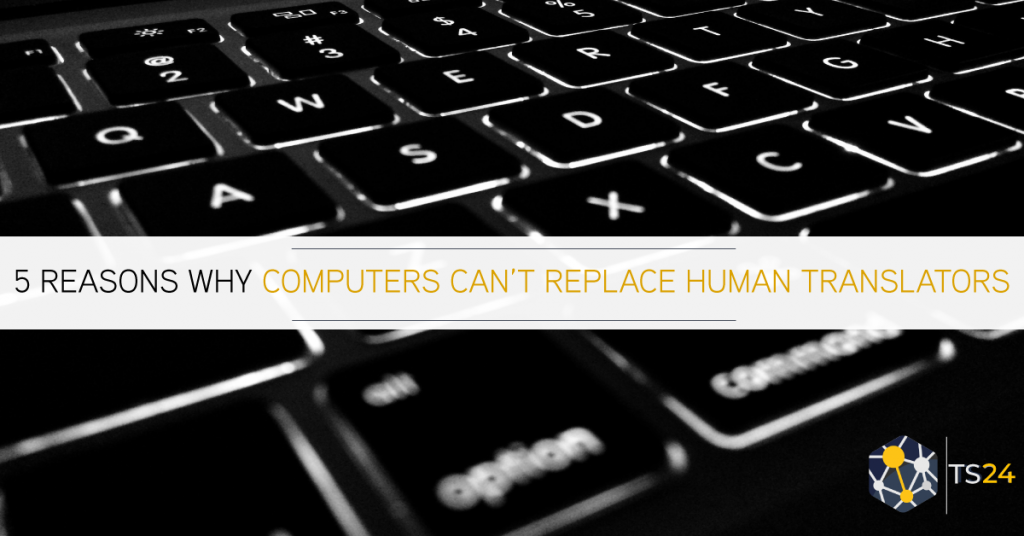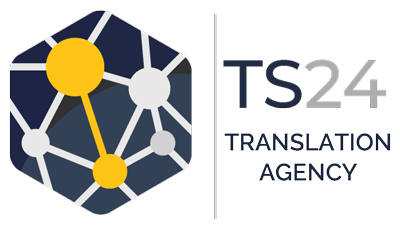Computers Can’t Replace Human Translators – Here’s Why
Language translation can be a delicate process in a world where technology speeds things up. Even though there are various computer programs, mostly machine translators, working within the translation industry, human translators still have the upper hand.
Companies with shoestring budgets may look for shortcuts for getting professional translation services. However, these shortcuts do not always result in consistent and accurate translations. Even though computers promise instant, free translations, there are many reasons why they haven’t replaced human translators yet.
Let us look at where these machine translators are lacking and why human translators are still your best option to get accurate translation services.
Can Computers Produce 100% Accurate Translations?
Machine translation is not a new phenomenon. The alternative has existed since the 1950s and has dramatically improved. However, to this day, most professionals agree that computers can’t, and will never, produce high-quality translations.
Translating important words requires spirit and emotion from the translator, something a computer can never provide. For example, when you stumble upon a foreign site and hit the translate button, sometimes all the phrases seem odd. Therefore, getting a professional human translation is the best way to present your work to foreign readers.
An evaluation of online translation accuracy by the University of Mississippi showed native translators to be 100% accurate, while computers were only around 80% accurate.
How Does Machine Translation Work?
Before we sidetrack machine translations entirely, you need to understand why they are so different from human translations. Machine translators use complex MT engines to do all their work. They include coding, decoding, algorithms, and strategies like Rule-Based Machine Translation.
During the 1990s, Statistical Machine Translation (SMT) came out and replaced machine translations. It analysed the body of pieces of bilingual data and converted it into another language. However, even after this massive leap of technology, it still lacked in many ways.
Those looking for a quick translation who don’t care about the tone and emotion of the text still use SMT. However, companies with a bigger audience who like to keep everything perfect opt to use human translations for their business.
Reasons Why Computers Can’t Replace Human Translators
Since translator programs came around 70 years ago, technology has come a long way. However, here are the top five reasons why a computer or a machine translator can never replace human translators:
1. Content Quality
Human translators tend to be more fluid and natural in their work. Their translations are based on artistic interpretations. Not only this, but they also include the emotions that the author is trying to convey within the text. They understand the essence and meaning behind the context they translate, hence doing a better job than machines.
Machines are unaware of the nuances and culture of the language they are translating. Furthermore, they are alienated from the phrases, tones, idioms, and contexts in many instances.
In simple words, machine translators cannot understand the context of a text like a human, and therefore, their content quality can be low.
2. Words With Multiple Meanings
Several words have the same spelling but different meanings in foreign languages. Therefore, a professional translator always looks into different meanings of the word and the context the word is used in.
Machine translators might have made great strides in the past decades, but they are not nearly as accurate as human translators. A study by Western University highlighted the inability of machine translators to distinguish between different meanings of the same word in a foreign language.
Here is an example: The word “wind” has two meanings, “to turn” and “flowing air.” However, their counterparts in alternative languages such as Spanish are not identical. For example, in Spanish, a turn is “enrollar,” and flowing air is “Viento.”
3. Lack Of Human Touch
In addition to their lack of understanding, machine-translated documents often appear mundane and dry. Yet, reading is among the essential forms of communication on this planet. This is why novels top charts and become bestsellers, and poems are a way of conveying feelings.
Sometimes, these emotions can be powerful enough to bring people to tears. However, computers lack the algorithms to pick up these emotions and translate them into the written word. Sometimes, each synonym in a document is carefully placed to create a specific tone, which a machine translator might wreck.
4. Localisation
A minor yet essential setback with machine translations is that they cannot distinguish between regional variations. For example, French is the national language of France, but it can also be directed to Canadians or French-speaking Algeria.
Many countries have different variations and dialects of the same language native to their residents. Unfortunately, computers cannot always distinguish these differences, making a human translator essential.
5. Evolution of Languages
It might be impossible for machine translators to learn a new vocabulary for every language, including everyday slang and common phrases. Languages are ever-evolving, and native speakers are the ones bringing that evolution.
Therefore, artificial intelligence might save time for people with their promptness, but you will have to spend hours rechecking the translation for errors. This will waste time for you and your company, making machine translations a bad choice.
Importance of Translations
Translations are a powerful tool for businesses to get their ideas across the world in ways that engage their audiences. English is the third most spoken language in the world. Still, if you can distribute your idea in Barcelona in native Spanish, it will likely grasp more attention.
Similarly, you will need a certified translation service provider based in the UK to handle your English translations.
Conclusion
There is no argument that machine translation is your best option for choosing the cheap route. However, if you are looking for a good-quality translation that conveys the tone and emotion of your content, you need to opt for a professional human translation.
If quality comes before speed, there are hundreds of native translators offering services around the globe. The final decision is up to you and your translation needs regarding efficiency and timeliness.


